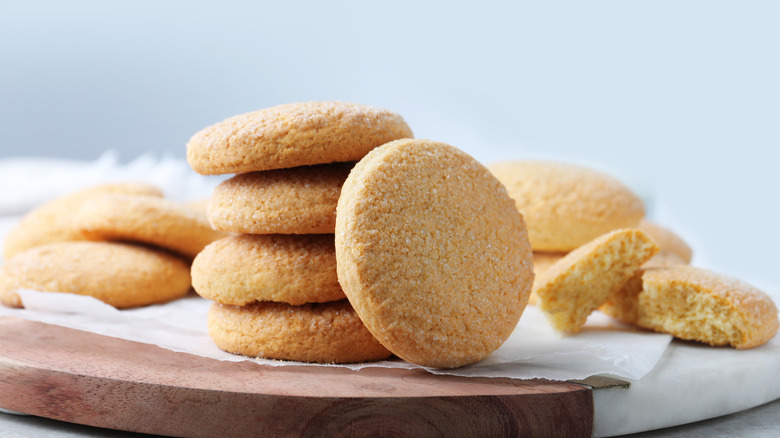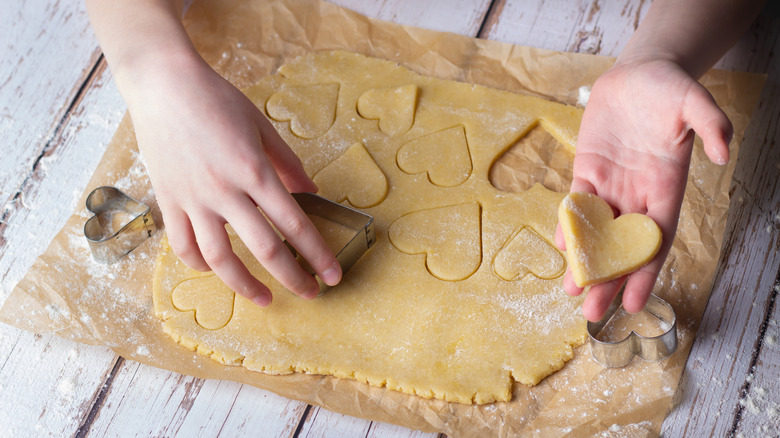The Temperature Tip For Crispy, Yet Soft Sugar Cookies
Cookies come in all sorts of flavors these days, but nothing will ever come close to replacing a classic sugar cookie. Made with simple ingredients, easy to create, and fun to dress up like adding sprinkles the right way, these sweet treats can cover all the bases. If there is one drawback, however, it's that they can be easy to overbake, resulting in cookies that are too dry and hard in the center and burned around the rim. Or worse, they're crispy on the edges but the insides are undercooked. The goal is a subtle and sweet cookie with crispy edges and a soft, chewy center. To get to the bottom of how to pull that off, Food Republic reached out to Dennis Littley, Chef and Recipe expert at Ask Chef Dennis, for some expert advice.
"Balancing crispy edges with a soft center for sugar cookies is all about baking temperature and time," Littley told us. "Bake at a slightly lower temperature (around 325 [degrees Fahrenheit] to 350 [degrees Fahrenheit]) for a longer time to cook the center without over-browning the edges."
Lowering the temperature in your oven by 25 to 50 degrees Fahrenheit from the recipe won't drastically alter your cookies, but it will give them a chance to spread out, get crispy on the outside, and slowly cook the inside. Keep in mind that it will take a few extra minutes to fully bake the cookies, however.
Refrigerate or freeze the cookie dough before baking
While cooler oven temperatures will make a big difference in the texture of sugar cookies, you can also help the process by starting with cold dough. This will keep the center of the cookie from heating up too fast and overcooking. Dennis Littley, who is a classically trained chef with over 40 years of experience, added, "Chilling the dough beforehand also helps maintain structure."
Sugar cookie dough should be refrigerated for at least half an hour before forming it into cookies for baking, so the butter can harden up — but you'll get even better results if you wait 24 hours. This will prevent the cookies from overspreading when they're in the oven, which will make them too thin and dry.
The easiest method for chilling cookie dough is to roll it into a long cylinder, like the tubes at the grocery store. This way, it can be sliced and baked while the dough is still cold. Keep in mind that how you roll makes a big difference between crispy and chewy results. If you prefer to start with a cold ball of dough that is rolled out and cut with cookie cutters, let the dough warm up for five to 10 minutes on the countertop, and try using powdered sugar instead of flour like Alton Brown. If the ball of dough starts to get too soft, put it back in the fridge until it's hardened up again. By starting with cold dough and the right oven temperature, you'll always end up with perfectly crispy yet chewy cookies.


